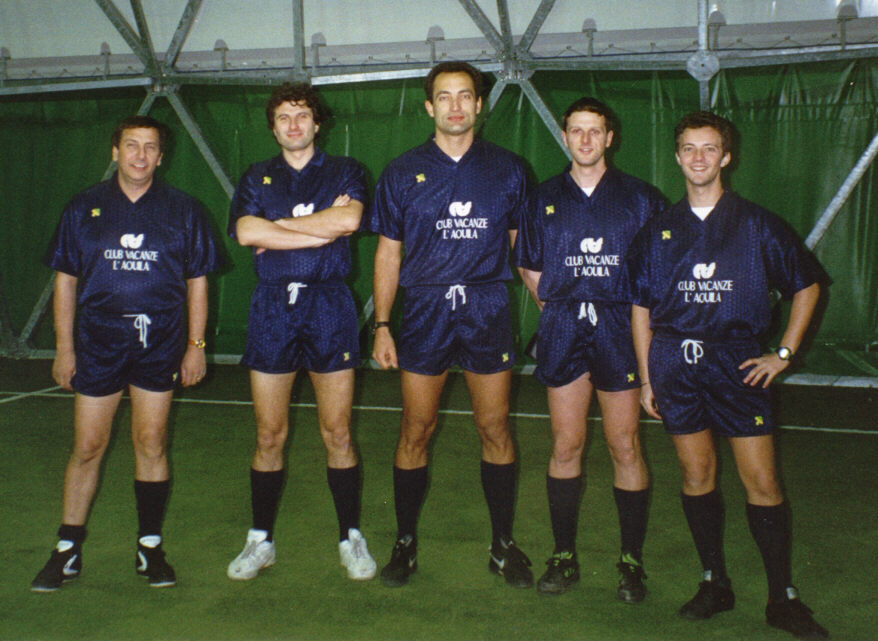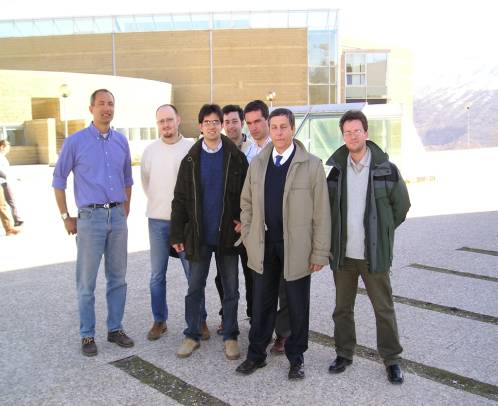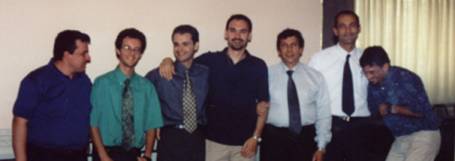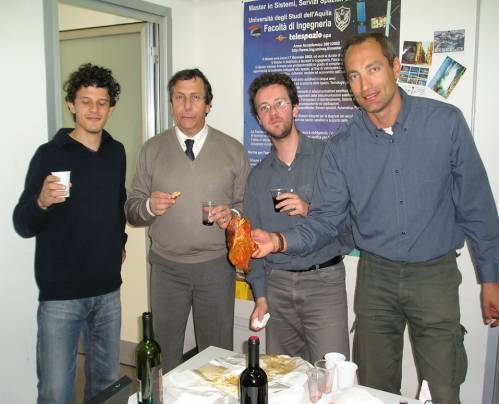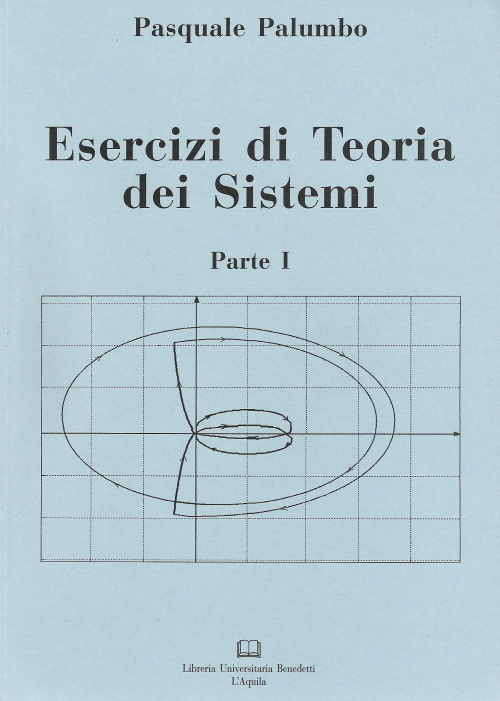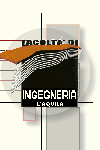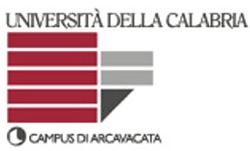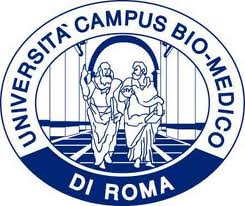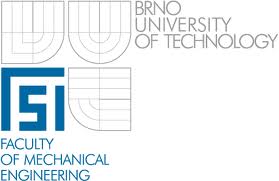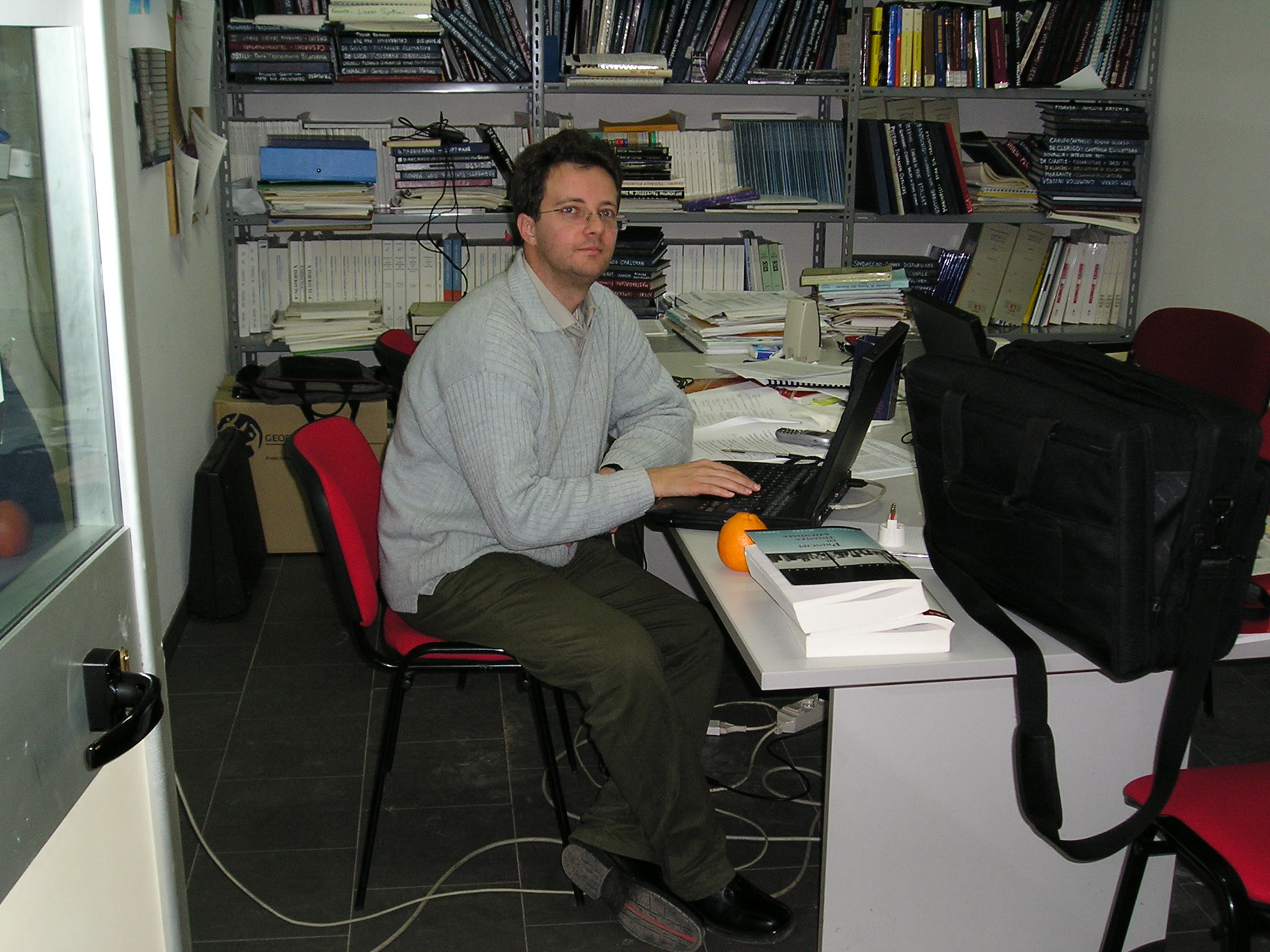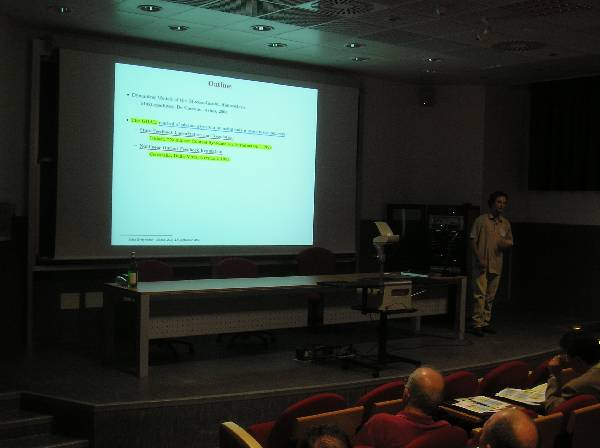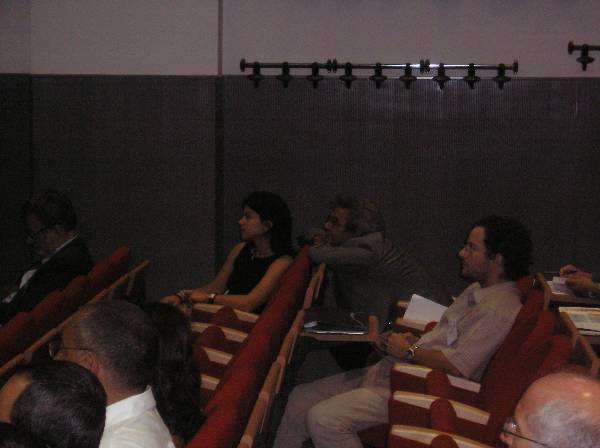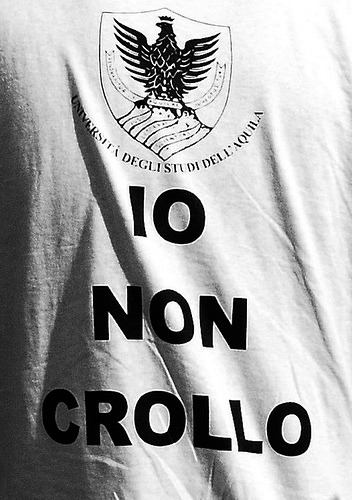PUBLICATIONS
ON INTERNATIONAL JOURNALS
R[1] A. Germani, C. Manes, P.
Palumbo,
''Optimal linear filtering for bilinear stochastic
differential systems with unknown inputs'', IEEE
Trans. on Automatic Control, Vol. 47,
No. 10, pp. 1726-1730, 2002
R[2] A. Germani, C. Manes, P.
Palumbo,
''Polynomial filtering for stochastic non Gaussian
descriptor systems'', IEEE Trans. on Circuits and
Systems - I: Regular Papers, Vol. 51, No. 8, pp. 1561-1576,
2004
R[3] A. Germani, C. Manes, P. Palumbo, ''Polynomial
Extended Kalman Filter'', IEEE Trans. on Automatic Control, Vol.
50, No. 12, pp. 2059-2064, 2005
R[5] P. Palumbo, W.H. Ong-Clausen, S.
Panunzi, A. De Gaetano, ''Linear periodic models of
subcutaneous insulin absorption: mathematical
analysis'', HERMIS
Journal, Special Issue on Differential and
Integral Equations in Physics Epidemiology and
Medicine: Application and Numerics, Vol. 7, pp. 60-79, 2006
R[6] A. Germani, C. Manes, P. Palumbo, M.
Sciandrone, ''A
higher-order method for the solution of nonlinear scalar
equation'', Journal of Optimization Theory and
Applications, Vol. 131, No. 3, pp. 347-364, 2006
R[7] A. Germani, C. Manes, P.
Palumbo, P. Pepe, ''A robust approximation scheme for
the LQG control of an undamped flexible beam with a tip
mass'', European
Journal of Control, Vol.12,
No.6, pp. 635-651, 2006
R[8] P. Palumbo, S. Panunzi, A. De Gaetano, ''Qualitative
behavior of a family of delay-differential models of
the glucose-insulin system'', Discrete
and
Continuous Dynamical Systems - Series B, Vol.
7, No. 2, pp. 399-424, 2007
R[9] S. Panunzi, P. Palumbo, A. De Gaetano, ''A discrete
single-delay model for the Intra Venous Glucose
Tolerance Test'', Theoretical Biology and Medical
Modelling,
Vol. 4, No. 35, 16 pages, 2007
R[10] A. Germani, C. Manes, P. Palumbo, ''Filtering of
stochastic nonlinear differential systems via a
Carleman approximation approach'', IEEE
Trans. on Automatic Control, Vol.
52, No. 11, pp. 2166-2172, 2007
R[11] P.
Palumbo, U. Picchini, B. Beck,
J. Van Gelder, N. Delbar, A. De Gaetano, ''A
general approach to the apparent permeability index'', Journal
of Pharmacokinetics and Pharmacodynamics, Vol.35,
pp.235-248, 2008
R[12] D.V. Giang, Y. Lenbury, A. De
Gaetano, P. Palumbo,
''Delay model of glucose-insulin systems: global
stability and oscillated solutions conditional on delays'', Journal
of Mathematical Analysis and Applications, Vol.343,
Issue 2, pp.996-1006, 2008
R[13] A.
De Gaetano, T. Hardy, B. Beck, E. Abu-Raddad, P.
Palumbo, J. Bue-Valleskey, N.
Porksen, "Mathematical models of diabetes
progression'', American Journal of Physiol.
Endocrinol. Metab.,
Vol.295, pp.E1462-E1479, 2008
R[14] A. Germani, C. Manes, P. Palumbo, ''State
estimation of stochastic systems with switching
measurements: a polynomial approach'', International
Journal
of
Robust and Nonlinear Control, Vol.19, Issue 14
(Special Issue on "Observability and observer-based
control of hybrid systems"), pp.1632-1655, 2009
R[15] P.
Palumbo, P. Pepe, S. Panunzi, A.
De Gaetano, ''Robust closed-loop control of
plasma glycemia: a discrete-delay model approach'', Discrete and
Continuous Dynamical Systems - Series B,
Special Issue on
Mathematical Biology and Medicine, Vol.12,
No.2, pp.455-468, 2009
R[16] P.
Palumbo, A. De Gaetano,
''An islet population model of the endocrine pancreas'', Journal
of
Mathematical Biology, Vol.61, No.2,
pp.171-205, 2010
R[17] A.
Germani, C. Manes, P. Palumbo, ''Representation of a class of MIMO
systems via internally positive realization'', European
Journal of
Control, Vol.16, No.3, pp.291-304, 2010
R[18] G.
Mavelli, P. Palumbo, ''The Carleman approximation approach
to solve a stochastic nonlinear control problem'',
IEEE
Trans.
on Automatic Control, Vol.55, No.4,
pp.976-982, 2010
R[19] L. Farina, A. Germani, G. Mavelli, P.
Palumbo, ''Identification
of regulatory network motifs from gene expression
data'', Journal
of
Mathematical Modelling and Algorithms, Vol. 9,
No.3, pp.233-245, 2010
R[20] P. Palumbo, G. Mavelli, L. Farina, L.
Alberghina, ''Networks
and circuits in cell regulation'', Biochemical
and
Biophysical Research Communications, Vol.
396, pp.881-886, 2010
R[21] F. Muzi, A. De Sanctis, P.
Palumbo, ''A new
algorithm for smart grid protection based on
synchronized sampling'', International
Journal
of Energy and Environment, Vol. 5, Issue 4,
pp.566-573, 2011
R[22] L.
Alberghina, G. Mavelli, G. Drovandi, P. Palumbo, S.
Pessina, F. Tripodi, P. Coccetti, M. Vanoni, "Growth and cycle in Saccharomyces
cerevisiae: Basic regulatory design and
protein-protein interaction network'', Biotechnology
Advances, Vol. 30,
Issue 1, pp.52-72, 2012
R[23] J. Li, M. Wang, A. De
Gaetano, P.
Palumbo, S. Panunzi, ''The range of
time delay and the global stability of the equilibrium
for an IVGTT model'', Mathematical
Biosciences,
Vol.235, Issue 2, pp.128-137, 2012
R[24] P. Palumbo, P.
Pepe, S. Panunzi, A.
De Gaetano, ''Time-delay model-based control
of the glucose-insulin system, by means of a state
observer'', European Journal of
Control, Vol.18(6),
pp.591-606, 2012
R[25] A. De Gaetano, A. Matone, A.M. Agnes,
P. Palumbo, F. Ria, S. Magalini, ''Modeling
rejection immunity'', Theoretical Biology
and Medical Modeling, Vol. 9(18), 30
pages, 2012
R[26] F. Cacace, A. Germani, P. Palumbo, ''The state
observer as a tool for the estimation of gene
expression'', Journal of
mathematical Analysis and Applications,
Vol. 391, pp.382-396, 2012
R[27] F. Cacace, A. Germani, P. Palumbo, ''The Observer
Follower Filter: a new
approach to nonlinear suboptimal
filtering'', Automatica,
Vol. 49(2), pp.548-553, 2013
R[28] K. Juagwon, Y. Lenbury, A. De
Gaetano, P. Palumbo, ''Application of
modified Watanabe's approach
for reconstruction of insulin secretion rate during
OGTT under non-constant fraction of hepatic insulin
extraction'', International Journal of
Mathematics and Computers in Simulation,
Vol.7(3), pp.304-313, 2013
R[29] P. Palumbo, S. Ditlevsen, A.
Bertuzzi, A. De Gaetano, ''Mathematical
modeling of the glucose-insulin system: a Review'', Mathematical
Biosciences, Vol.244, pp.69-81,
2013
R[30] F. Carravetta, P. Palumbo, P. Pepe, ''Memoryless
solution to the optimal control problem for linear
systems with delayed input'', Kybernetyca,
Vol.49(4), pp.569-589, 2013
R[31] S. Tasdighian, L. Di Paola, M. De
Ruvo, P. Paci, D. Santoni, P. Palumbo, G. Mei, A. Di
Venere, A. Giuliani, ''Modules
identification in protein structures: the
topological and geometrical solutions", Journal
of
Chemical Information and Modeling, Vol. 54, pp.159-168,
2014
R[32] P. Palumbo, G.
Pizzichelli, S.
Panunzi, P.
Pepe, A.
De Gaetano, ''Model-based
control of plasma glycemia: tests on populations of
virtual patients", Mathematical
Biosciences, Vol.
257, pp.2-10, 2014
R[33] A. De Gaetano, C. Gaz, P. Palumbo, S.
Panunzi, ''A unifying organ
model of pancreatic insulin secretion'', PLoS
ONE, 10(11):
e0142344, 34 pages, 2015
R[34] A. Borri, F. Carravetta, G.
Mavelli, P. Palumbo, ''Block-tridiagonal
state-space realization of Chemical Master Equations:
a tool to compute explicit solutions", Journal
of Computational and Applied Mathematics, Vol. 296,
pp.410-426, 2016
R[35] P. Palumbo, M. Vanoni,
V. Cusimano, S. Busti, F. Marano, L. Alberghina, ''Whi5 phosphorylation embedded in
the G1/S network dynamically controls critical cell
size and cell fate'', Nature
Communications, 7:11372,
doi: 10.1038/ncomms11372, 2016
R[36] A. Borri, P. Palumbo,
A. Singh, ''The impact of
negative feedback in metabolic noise propagation'',
IET
Systems Biology, Vol.10, pp.179-186,
2016
R[37] F. Cacace, V. Cusimano, A. Germani,
P. Palumbo, ''A state
predictor for continuous-time stochastic systems'', Systems
& Control Letters, Vol.98, pp.37-43,
2016
R[38] A. Borri, P.
Palumbo, C. Manes, S. Panunzi, A. De
Gaetano, ''Sampled-data observer-based glucose control
for the Artificial Pancreas'', Acta
Polytechnica Hungarica, Vol.14(1),
pp.79-94, 2017
R[39] A. Borri, F. Cacace, A. De Gaetano,
A. Germani, C. Manes, P. Palumbo, S. Panunzi, P. Pepe,
''Luenberger-like
observers for nonlinear time-delay systems with
application to the Artificial Pancreas: the attainment
of good performance'', IEEE
Control Systems Magazine, Vol.37(4),
pp.33-49, 2017
R[40] C. Manes, P. Palumbo, V. Cusimano, M.
Vanoni, L. Alberghina, ''Modeling biological timing and
synchronization mechanisms by means of interconnections
of stochastic switches'', IEEE
Control Systems Letters, Vol.2(1),
pp.19-24, 2017 (accepted for presentation at 56th IEEE
conference of Decision and Control, Melbourne,
Australia, December 2017)
R[41] F. Cacace, V. Cusimano, A. Germani,
P. Palumbo, F. Papa, ''Closed-loop control of tumor growth by
means of anti-angiogenic administration'', Mathematical
Biosciences and Engineering, Vol.15(4),
pp.827-839, 2018
R[42] F. Cacace, V. Cusimano, P. Palumbo, ''Optimal impulsive control with application
to antiangiogenic tumor therapy'', to
appear on IEEE
Trans. on Control Systems Technology, 2018
R[43] M. Di Ferdinando, P. Pepe, P.
Palumbo, S. Panunzi, A. De Gaetano, ''Semi-global sampled-data dynamic output
feedback controller for the glucose-insulin system'', to
appear on IEEE Trans. on Control Systems Technology, 2018
OTHER PUBLICATIONS ON
INTERNATIONAL JOURNALS
Ra[1] A.
De Gaetano, T. Hardy, E. Abu-Raddad, P. Palumbo, J.
Bue-Valleskey, N. Porksen, "Predicting the
effects of lifestyle of pharmacological intervention
on progression of type 2 diabetes: evaluation of a
novel mathematical model against results of the DPP'', Diabetologia, Vol.52, Suppl.1,
pp.S328-S328, 2009
Ra[2] P. Palumbo, S.
Pessina L. Farina, M. Vanoni, G. Mavelli, L.
Alberghina, "Towards a yeast cell cycle
hybrid model: network analysis for model building of
the coordination between cell growth and division'', Journal of
Biotechnology, Vol.150, Suppl.1, pp.S524-S525, 2010
Ra[3] A. Germani, C.
Manes, P. Palumbo, "Final comments
by the Authors A. Germani, C. Manes, P. Palumbo'', European Journal of
Control, Vol.16,
No.3, pp.306-306, 2010
Ra[4] P.
Palumbo, P. Pepe, S. Panunzi, A. De
Gaetano, "Final comments by the Authors P. Palumbo, P. Pepe, S. Panunzi, A. De Gaetano'', European Journal of
Control, Vol.16, No.3, pp.306-306, 2010
B[1] P.
Palumbo, A. De Gaetano, ''State-feedback control
of the glucose-insulin system", MATH
EVERYWHERE. Deterministic and Stochastic
Modelling in Biomedicine, Economics and Industry.
G. Aletti, M. Burger, A. Micheletti, D. Morale Editors,
Springer, Heidelberg, pp. 241-252, 2006
B[2] P.
Palumbo, P. Pepe, S. Panunzi, A. De Gaetano, ''DDE
model-based control of glycemia via subcutaneous insulin
administration", Delay
Systems.
From Theory to Numerics and Applications.
T. Vyhidal, J.-F Lafay, R. Sipahi Editors, Springer
International Publishing, pp. 229-240, 2014
B[3] A. De Gaetano, S. Panunzi, P. Palumbo, C. Gaz, T. Hardy, ''Data-driven modeling of diabetes
progression", Data-driven
modeling
for diabetes. Diagnosis and Treatment. Lectures Notes
in Bioengineering. V. Marmarellis,
G. Mitsis Editors, Springer Verlag Berllin
Heidelberg, pp. 165-186, 2014
B[4] J.D. Kong, S.S. Kumar, P. Palumbo,
''DDE models of the
glucose-insulin system: a useful tool for the artificial
pancreas", Managing
Complexity,
Reducing Perplexity in Biological Systems.
M. Delitala, G. Ajomne-Marsan Editors, Springer
Proceedings in Mathematics & Statistics, Vol. 67, pp.
109-117, 2014
B[5] P. Palumbo,
P. Pepe, S. Panunzi, A. De Gaetano, '' Recent results on
glucose-insulin predictions by means of a state
observer for time-delay systems", Prediction
Methods for Blood Glucose Concentration: Design, Use and
Evaluation. H. Kirchsteiger et al Editors,
Springer Lecture Notes in Bioengineering, pp.227-241, 2015
B[6] P. Palumbo,
M. Vanoni, F. Papa, S. Busti, M. Wortel, B. Teusink, L.
Alberghina, ''An integrated model quantitatively describing
metabolism, growth and cell cycle in budding yeast", Artificial
Life and Evolutionary Computation, M. Pelillo et al Editors, Communications in Computer and Information
Science (CCIS book series), Springer, pp.165-180,
2018
PUBLICATIONS ON THE PROCEEDINGS OF
INTERNATIONAL CONFERENCES
C[1] M. Dalla Mora, C. Manes, P. Palumbo, ''Optimal quadratic
filtering of quantization noise in non-Gaussian
systems'', UKACC International Conference on Control
96, pp. 1091-1096,
Exeter, UK, 1996
C[2] C. Manes, P. Palumbo, P. Pepe,
''An approximation scheme for the LQG control of
flexible structures'', 5th European Control
Conference (ECC99), Karlsruhe, Germany, 1999
C[3] P. Palumbo, ''A realizable observer for a
flexible system with delayed outputs'', 2nd IFAC
Workshop on Linear Time Delay Systems (LTDS2000),
pp. 64-69, Ancona, Italy, 2000
C[4] A. Germani, C. Manes, P.
Palumbo,
''Optimal linear filtering for stochastic non-Gaussian
descriptor systems'', 40th Conference on Decision and
Control (CDC01),
pp. 2514-2519, Orlando, Florida, 2001
C[5] A. Germani, C. Manes, P.
Palumbo,
''Kalman Bucy filtering for linear stochastic
differential systems with unknown inputs'', 15th
IFAC World Congress on Automatic Control (IFAC2002),
Barcelona, Spain, 2002
C[6] A. Germani, C. Manes, P.
Palumbo,
''Filtering switching systems via a singular minimax
approach'', 41st Conference on Decision and Control
(CDC02),
pp. 2600-2605, Las Vegas, Nevada, 2002
C[7] A. Germani, C. Manes, P.
Palumbo,
''State estimation for a class of stochastic variable
structure systems'', 41st Conference on Decision and
Control (CDC02),
pp. 3027-3032, Las Vegas, Nevada, 2002
C[8] A. Germani, C. Manes, P.
Palumbo, ''A
minimum variance filter for discrete time linear systems
perturbed by unknown nonlinearities'', IEEE
International Symposium on Circuits and Systems (ISCAS2003),
Bangkok, Thailand, 2003
C[9] A. Germani, C. Manes, P. Palumbo,
''Polynomial extended Kalman filtering for discrete-time
nonlinear stochastic systems'', 42nd Conference on
Decision and Control (CDC03),
pp. 886-891, Maui, Hawaii, 2003
C[10] A. Germani, C. Manes, P. Palumbo,
''Polynomial filtering for stochastic systems with
Markovian switching coefficients'', 42nd
Conference on Decision and Control (CDC03),
pp. 1392-1397, Maui, Hawaii, 2003
C[11] D. Di Martino, A.
Germani, C. Manes, P. Palumbo, ''Polynomial
approach for filtering and identification of a class
of uncertain systems'', 2nd IFAC Symposium on
System, Structure and Control (SSSC04), pp.
579-584, Oaxaca, Mexico, 2004
C[12] A. Germani, C. Manes, P. Palumbo,
''Polynomial filtering for stochastic non-Gaussian
descriptor systems'', 43rd Conference on Decision
and Control (CDC04),
pp. 2088-2093, Paradise Island, The Bahamas, 2004
C[13] D. Di Martino, A.
Germani, C. Manes, P. Palumbo, ''Quadratic
filtering for simultaneous state and parameter
estimation of uncertain systems'', 43rd Conference
on Decision and Control (CDC04),
pp. 3569-3574, Paradise Island, The Bahamas, 2004
C[14] D. Di Martino, A.
Germani, C. Manes, P. Palumbo, "State observation
for linear systems with polynomial w.r.t. state
output", 43rd Conference on Decision and Control (CDC04),
pp. 3886-3891, Paradise Island, The Bahamas, 2004
C[15] A. Germani, C. Manes,
P. Palumbo, ''A family of polynomial filters for
discrete-time nonlinear stochastic systems'', 16th
IFAC World Congress on Automatic Control (IFAC2005),
Prague, Czech Republic, 2005
C[16] A. De Gaetano, D. Di
Martino, A. Germani, C. Manes, P. Palumbo, ''Distributed-delays
models of the glucose-insulin homeostasis and
asymptotic state observation'', 16th IFAC World
Congress on Automatic Control (IFAC2005), Prague, Czech Republic,
2005
C[17] P. Palumbo, W.H. Ong-Clausen, S. Panunzi, A. De Gaetano, "Analysis of an impulsive
model of subcutaneously delivered insulin kinetics'',
7th Hellenic European Conference on Computer
Mathematics and its Applications (HERCMA2005),
Athens, Greek, 2005
C[18] A. Germani, C. Manes, P. Palumbo, ''Polynomial filtering and
indentification of discrete-time nonlinear uncertain
stochastic systems'', 44th Conference on Decision
and Control & European Control Conference (CDC-ECC05), pp.
1917-1922, Seville, Spain, 2005
C[19] A. Germani, C. Manes, P. Palumbo, ''Filtering of differential
nonlinear systems via a Carleman approximation
approach'', 44th Conference on Decision and
Control & European Control Conference (CDC-ECC05), pp.
5917-5922, Seville,
Spain, 2005
C[20] P. Palumbo, S.
Panunzi, A. De Gaetano, ''Stability analysis
of a discrete-delay model of the glucose-insulin
system'', 6th IFAC Workshop on Time Delay Systems
(TDS06), L'Aquila, Italy, 2006
C[21] P. Palumbo, A.
De Gaetano, ''A closed loop optimal control
of the plasma glycemia'', 45th IEEE Conference on
Decision and Control (CDC06), pp. 679-684, San Diego, California, 2006
C[22] D. Di Martino, A. Germani, C.
Manes, P. Palumbo, ''Design of
observers for systems with rational output function'',
45th IEEE Conference
on Decision and Control (CDC06), pp. 1641-1646, San Diego, California, 2006
C[23] A. Germani, F. Graziosi, C. Manes,
G. Ocera, P. Palumbo, ''Recursive
filtering for log-Rice signals'', 45th IEEE Conference on Decision
and Control (CDC06), pp. 3150-3155, San Diego, California, 2006
C[24] C. Manes, A. Martinelli, F.
Martinelli, P. Palumbo, ''Mobile
robot localization based on a polynomial approach'', International
Conference on Robotics and Automation (ICRA07),
Rome, Italy, pp. 3539-3544, 2007
C[25] G. Mavelli, P. Palumbo, ''A
Carleman approximation scheme for a stochastic optimal
nonlinear control problem'', 9th European Control
Conference (ECC07), Kos, Greece, pp. 3672-3678, 2007
C[26] A. Germani, C. Manes, P. Palumbo, ''State space representation of a class of
MIMO systems via positive systems'', 46th Conference
on Decision and Control (CDC07), New
Orleans, Louisiana, pp. 476-481, 2007
C[27] A. Germani, C. Manes, P. Palumbo, ''Simultaneous system identification and channel estimation: a
hybrid system approach'', 46th Conference on
Decision and Control (CDC07), New
Orleans, Louisiana, pp. 1764-1769, 2007
C[28] G. Mavelli, P. Palumbo, ''A Carleman approximation scheme for a
stochastic optimal control problem in the
continuous-time framework'', accepted for
presentation at 17th IFAC World Congress on Automatic
Control (IFAC2008), Seoul, South Korea, July 2008
C[29] F. Carravetta, G. Felici, P. Palumbo, ''Regulation of a manned sea-surface
vehicle via stochastic optimal control'', accepted
for presentation at 17th IFAC World Congress on
Automatic Control (IFAC2008), Seoul, South Korea, July 2008
C[30] P. Palumbo, P.
Pierdomenico, S. Panunzi, A. De Gaetano, ''Robust closed-loop
control of plasma glycemia: a discrete-delay model approach'', 47th
Conference on Decision and Control (CDC08),
Cancun, Messico, pp. 3330-3335, 2008
C[31] F. Carravetta, G. Felici, P. Palumbo,
''Frequency based model validation and parameter
identification of a sea surface vehicle'', 14th IEEE
International Conference on Methods and Models in
Automation and Robotics (MMAR2009),
Miedzyzdroje, Poland, 2009
C[32] P. Palumbo, P. Pepe,
S. Panunzi, A. De Gaetano, ''Observer-based
closed-loop control of plasma glycemia'', 48th Conference on Decision and Control (CDC09), pp.6189-6194, Shanghai,
China,
December 2009
C[33] F. Cacace,
A. Germani, P.
Palumbo, ''Observer-based identification of a
multi-output feedforward loop from gene expression data'', 48th
Conference on Decision and Control (CDC09), pp.3507-3512, Shanghai,
China,
December 2009
C[34] P. Palumbo, P. Pepe,
S. Panunzi, A. De Gaetano, ''Digital
closed-loop control of plasma glycemia'', 49th
Conference on Decision and Control (CDC10),
pp.833-838, Atlanta, Georgia, 2010
C[35] F. Carravetta, P. Palumbo, P. Pepe,
''Quadratic optimal control of linear systems with
time-varying input delay'', 49th Conference on Decision and Control (CDC10),
pp.4996-5000, Atlanta, Georgia, 2010
C[36] F. Cacace,
L. Farina, A. Germani, P. Palumbo,
''Discrete-time models for gene transcriptional
regulation networks'', 49th Conference on Decision and Control (CDC10),
pp.7618-7623, Atlanta, Georgia, 2010
C[37] F. Muzi, A.
De Sanctis, P.
Palumbo, ''Distance
protection for smart grids with massive generation from
renewable sources'', 6th IASME/WSEAS Conference on Energy &
Environment (EE11), pp.208-213, Cambridge, UK, 2011
C[38] P. Palumbo, P. Pepe,
S. Panunzi, A. De Gaetano, ''Glucose control by
subcutaneous insulin administration: a DDE modelling
approach'', 18th IFAC World Congress on Automatic
Control (IFAC2011), pp.1471-1476, Milan,
Italy, 2011
C[39] F. Cacace,
A. Germani, P.
Palumbo, ''A new approach
to nonlinear filtering via a mixed state observer and
polynomial Kalman-Bucy scheme'', accepted
for presentation at the 18th IFAC World Congress on Automatic
Control (IFAC2011), pp.4477-4482, Milan,
Italy, 2011
C[39] F. Cacace,
A. Germani, P.
Palumbo, ''A new approach
to nonlinear filtering via a mixed state observer and
polynomial Kalman-Bucy scheme'', 18th IFAC World Congress on Automatic
Control (IFAC2011),
pp.4477-4482, Milano, Italia, 2011
C[40] F. Cacace,
A. Germani, P.
Palumbo, ''A state observer
approach to filter stochastic nonlinear differential
systems'', 50th Conference
on Decision and Control and European Control
Conference (CDC11),
pp.7917-7922, Orlando, Florida, 2011
C[41] P. Palumbo, G.
Pizzichelli, S. Panunzi, P. Pepe, A. De
Gaetano, ''Tests on a virtual patient for an
observer-based, closed-loop control of plasma glycemia'', 50th
Conference on Decision and Control and European
Control Conference (CDC11),
pp.6936-6941, Orlando, Florida, 2011
C[42] F. Carravetta, P. Palumbo, P. Pepe,
''Memoryless solution to the infinite horizon optimal
control of linear time-invariant systems with delayed
input'', 31st IASTE Asian Conference on Modeling,
Identification and Control (AsiaMIC2012), 6
pages, Phucket, Thailand, 2012
C[43] P. Palumbo, P. Pepe,
S. Panunzi, A. De
Gaetano, ''Observer-based glucose control via subcutaneous insulin
administration'', 8th IFAC
Symposium on Biological and Medical Systems (BMS12), 6
pages, Budapest, Hungary, 2011
C[44] K. Juagwon, Y. Lenbury, A. De
Gaetano, P. Palumbo, "Reconstruction of insulin secretion under
the effects of hepatic extraction during OGTT: a
modelling and convolution approach", 13rd WSEAS American
Conference on Applied Mathematics (AMERICAN-MATH'13),
pp.85-90, Cambridge, Massachussets, 2013
C[45] P. Palumbo, P. Pepe,
S. Panunzi, A. De
Gaetano, ''Observer-based closed-loop control
for the glucose-insulin system: local Input-to-State
Stability with respect to unknown meal disturbances'', American Control
Conference (ACC13),
pp.1751-1756, Washington, DC, 2013
C[46] A. Borri, F. Carravetta, G. Mavelli,
P. Palumbo, ''Some
Results on the structural properties and the solution of
the Chemical Master Equation'', American Control
Conference (ACC13),
pp.3771-3776, Washington, DC, 2013
C[47] A. Borri, F. Carravetta, G. Mavelli,
P. Palumbo, ''Chemical
Master Equations: a mathematical scheme for the
multi-site phosphorylation case'', 3rd International
Conference on Simulation and Modeling Methodologies,
Technologies and Applications (SIMULTECH13),
pp.681-688, Reykjavik, Island, 2013
C[48] P. Palumbo, P. Pepe,
J.D. Kong, S.S. Kumar, S. Panunzi, A. De
Gaetano, ''Regulation of the human plasma
glycemia by means of glucose measurements and
subcutaneous insulin administration'', 3rd IFAC International
Conference on Intelligent Control and Automation
Science (ICONS13), pp.96-101, Chengdu, China,
2013
C[49] F. Cacace, V. Cusimano, A. Germani,
P. Palumbo, ''The Observer Follower Filter for
stochastic differential systems with sampled
measurements'', 52nd
IEEE Conference on Decision and Control (CDC13),
pp.25-30, Florence, Italy, 2013
C[50] A. De Gaetano, C. Gaz, C. Gori
Giorgi, P. Palumbo, ''An islet population model of pancreatic
insulin production'', 52nd
IEEE Conference on Decision and Control (CDC13),
pp.3355-3360, Florence,
Italy, 2013
C[51] P. Palumbo, P. Pepe,
S. Panunzi, A. De
Gaetano, ''Closed-loop glucose control:
application to the Euglycemic Hyperinsulinemic Clamp'',
52nd IEEE Conference
on Decision and Control (CDC13),
pp.4461-4466, Florence,
Italy, 2013
C[52] P. Palumbo, G.
Pizzichelli, S. Panunzi, P. Pepe, A. De
Gaetano, ''Closed-loop control scheme for the
euglycemic hyperinsulinemic clamp: validation on virtual
patients'', 19th IFAC World Congress (IFAC2014),
pp.2088-2093, Cape Town, South Africa, 2014
C[53] F. Cacace, V. Cusimano, A. Germani,
P. Palumbo, ''A Carleman
discretization approach to filter nonlinear stochastic
systems with sampled measurements'', 19th IFAC
World Congress (IFAC2014),
pp.9534-9539, Cape Town, South Africa, 2014
C[54] F. Carravetta, C. Manes, P. Palumbo, ''Filtering and parameter estimation for a
class of Hidden Markov Models with application to
bubble-counting in microfluidics'', 19th IFAC
World Congress (IFAC2014),
pp.9540-9544, Cape Town, South Africa, 2014
C[55] S. Panunzi, A. Borri, P. Palumbo, L.
Kovacs, A. De Gaetano, ''Simulation of insulin regimen and glucose
profiles in Type 1 Diabetic Patient'', IEEE International Conference on Systems,
Man, and Cybernetics (SMC2014),
pp.2464-2469, San Diego, California, 2014
C[56] A. Bersani, A. Borri, F. Carravetta,
G. Mavelli, P. Palumbo, ''Quasi-Steady-State Approximations of the
Chemical Master Equation in enzyme kinetics -
application to the double
phosphorylation/dephosphorylation cycle'', 53rd IEEE
Conference on Decision and Control (CDC14), pp.3053-3058, Los Angeles, California, 2014
C[57] P. Latafat, P. Palumbo, P. Pepe, L.
Kovacs, S. Panunzi, A. De
Gaetano, ''An LMI-based
controller for the glucose-insulin system'', 14th European Control Conference (ECC2015), pp.7-12,
Linz, Austria, 2015
C[58] A. Borri, P. Palumbo, A. Singh, ''Metabolic noise reduction for enzymatic
reactions: the role of a negative feedback'', 54th IEEE Conference on
Decision and Control (CDC15), pp.
2537-2542, Osaka, Japan, 2015
C[59] V. Cusimano, P. Palumbo, F. Papa, ''Closed-loop control of tumor growth by
means of anti-angiogenic administration'', 54th IEEE Conference on
Decision and Control (CDC15),
pp.7789-7794, Osaka, Japan, 2015
C[60] A. Borri, S.
Panunzi, P. Palumbo, C. Manes, A. De
Gaetano, ''Glucose control
with incomplete information'', IEEE
International Conference on Systems, Man, and
Cybernetics (SMC2016),
pp.1780-1784, Budapest, Hungary, 2016
C[61] F. Cacace, V. Cusimano, A. Germani,
P. Palumbo, ''Carleman
discretization of impulsive systems: applications to the
optimal control problem of anti-angiogenic tumor
therapies'', 55th IEEE Conference on Decision and Control (CDC16),
pp.1042-1047, Las Vegas, Nevada, 2016
C[62] A. Borri, F. Carravetta, P. Palumbo, ''Cubification of nonlinear stochastic
differential equations and approximate moments
calculation of the Langevin equation'', 55th IEEE Conference on Decision and Control (CDC16),
pp.4540-4545, Las Vegas, Nevada, 2016
C[63] A. Borri, P. Palumbo, A. Singh, ''Noise reduction for enzymatic reactions:
a case study for stochastic product clearance'', 55th IEEE Conference on Decision and Control (CDC16),
pp.5851-5856, Las Vegas, Nevada, 2016
C[64] P. Pepe, P. Palumbo, S. Panunzi, A.
De Gaetano, ''Local
sampled-data control for the glucose insulin system'', American Control Conference Conference (ACC17),
pp.110-115, Seattle, Washington, 2017
C[65] J.G. Pires, A. Borri, A. De Gaetano,
C. Manes, P. Palumbo, ''A short-term dynamical model for ghrelin'', 20th
IFAC World Congress (IFAC17),
pp.11503-11508, Toulouse, France, 2017
C[66] C. Gaz, A. De Gaetano, C. Manes, P.
Palumbo, A. Borri,
S. Panunzi, ''Effective
control of glycemia using a simple discrete-delay model'', 20th
IFAC World Congress (IFAC17),
pp.14068-14073, Toulouse, France, 2017
C[67] M. Di Ferdinando, P. Pepe, P.
Palumbo, S. Panunzi, A. De Gaetano, ''Robust global nonlinear sampled-data
regulator for the glucose-insulin system'', 56th IEEE Conference on Decision and Control (CDC17), pp. 4686-4691, Melbourne, Australia, 2017
C[68] F. Cacace, V. Cusimano, A. Germani,
P. Palumbo, M. Papi, ''Optimal
linear filter for a class of nonlinear stochastic
differential systems with discrete measurements'', 56th IEEE Conference on Decision and Control (CDC17), pp. 2807-2812, Melbourne, Australia, 2017
C[69] A. Borri, P. Palumbo, A. Singh, ''Noise propagation in a class of metabolic
networks'', 56th IEEE
Conference on Decision and Control (CDC17), pp. 447-452, Melbourne, Australia, 2017
C[70] P. Palumbo, M. Ghasemi, M. Fakhroleslam, ''On enzymatic reactions: the role of a
feedback from the substrate'', 56th IEEE Conference on Decision and Control (CDC17), pp. 441-446, Melbourne, Australia, 2017
C[71] A. Borri, P. Palumbo, A. Singh, ''Noise propagation in feedback coupling
between cell growth and metabolic activity'', accepted
for presentation at 57th IEEE Conference on Decision and Control (CDC18), Miami Beach, Florida, Dec 2018
TECHNICAL RESEARCH
REPORTS
Rc[1] C.
Manes,
P. Palumbo, P. Pepe, ''Analysis of an
approximation scheme for the LQG control of flexible
structures'', Department of Electrical
Engineering, Research Report, No.
98-27, L'Aquila, 1998
Rc[2] A. Germani, C. Manes, P.
Palumbo,
''Polynomial filtering for stochastic non-Gaussian
descriptor systems'', IASI-CNR Research Report,
No. 526, Rome, 2000
Rc[3] A. Germani, C. Manes, P.
Palumbo, ''Optimal linear filtering
for bilinear stochastic differential systems with
unknown inputs'', IASI-CNR
Research Report,
No. 541, Rome, 2000
Rc[4] A. Germani, C. Manes, P.
Palumbo, ''Kalman
Bucy filtering for singular stochastic differential
systems'', IASI-CNR
Research Report,
No. 545, Rome, 2001
Rc[5] A. Germani, C. Manes, P.
Palumbo, ''State
estimation for a class of stochastic variable structure
systems'', IASI-CNR
Research Report,
No. 548, Rome, 2001
Rc[6] A. Germani, C. Manes, P.
Palumbo,
''Filtering of switching systems via a singular minimax
approach'', IASI-CNR
Research Report,
No. 552, Rome, 2001
Rc[7] A. Germani, C. Manes, P.
Palumbo,
''Polynomial filtering for stochastic systems with
Markovian switching coefficients'', IASI-CNR Research Report, No. 570, Rome, 2002
Rc[8] A. Germani, C. Manes, P.
Palumbo,
''Polynomial extended Kalman filtering for discrete-time
nonlinear stochastic systems'', IASI-CNR Research Report, No. 572, Rome, 2002
Rc[9] A.
Germani, C. Manes, P. Palumbo, ''A minimum variance
filter for discrete-time linear systems perturbed by
unknown nonlinearities'', IASI-CNR Research Report, No. 575, Rome, 2002
Rc[10] A.
Germani, C. Manes, P. Palumbo, M. Sciandrone, ''A Newton-like higher
order method for the solution of nonlinear equations'',
IASI-CNR Research Report, No. 585, Rome, 2003
Rc[11] D. Di Martino, A. Germani, C. Manes, P.
Palumbo,
''Quadratic filtering for simultaneous state and
parameter estimation of uncertain systems'', IASI-CNR Research Report, No. 589, Rome, 2003
Rc[12] D. Di Martino, A. Germani, C. Manes, P. Palumbo, ''State observation for
linear systems with linear state dynamics and polynomial
output'', IASI-CNR
Research Report,
No. 595, Rome, 2003
Rc[13] D. Di Martino, A. Germani, C. Manes, P. Palumbo, ''A polynomial approach
for simultaneous channel estimation and data
detection'', IASI-CNR
Research Report,
No. 599, Rome, 2003
Rc[14] D. Di Martino, A. Germani, C. Manes, P. Palumbo, ''Polynomial approach
for filtering and identification of a class of uncertain
systems'', IASI-CNR
Research Report,
No. 603, Rome, 2003
Rc[15] A. Germani, C. Manes, P. Palumbo, '' A family of
polynomial filters for discrete-time nonlinear
stochastic systems '', IASI-CNR Research Report, No. 610, Rome, 2004
Rc[16] A. De Gaetano, D. Di Martino, A.
Germani, C. Manes, P.
Palumbo, ''Distributed-delay models of the
glucose-insulin homeostasis and asymptotic state
observation'', IASI-CNR Research Report, No. 618, Rome, 2004
Rc[17] P.
Palumbo, S. Panunzi, A. De Gaetano, ''Qualitative
properties of solutions for two delay-differential
models of the glucose-insulin system'', IASI-CNR
Research Report,
No. 620, Rome, 2004
Rc[18] S.
Panunzi, P.
Palumbo, A. De
Gaetano, ''Modeling IVGTT data with delay
differential equations'', IASI-CNR
Research Report,
No. 625, Rome, 2004
Rc[19] C. Manes, A. Martinelli, F.
Martinelli, P. Palumbo, ''Mobile
robot localization based on a polynomial approach'', IASI-CNR Research Report,
No.635, Rome, 2006
Rc[20] G. Mavelli, P. Palumbo, ''A Carleman approximation scheme for a
stochastic optimal control problem in the
continuous-time framework'', IASI-CNR Research Report,
No.644, Rome, 2006
Rc[21] P. Palumbo, W.H. Ong-Clausen, S. Panunzi, A. De Gaetano, "Analysis of an impulsive model of
subcutaneously delivered insulin kinetics'', IASI-CNR
Research Report, No.647, Rome, 2006
Rc[22] A. Germani, F. Graziosi, C. Manes, G.
Ocera, P. Palumbo, ''Recursive
filtering for log-Rice signals'', IASI-CNR
Research Report, No.649, Rome, 2006
Rc[23] P. Palumbo, A. De
Gaetano, ''A closed loop optimal control of the
plasma glycemia'', IASI-CNR Research Report,
No.652, Rome, 2006
Rc[24] A. Germani, C. Manes, P. Palumbo, ''Polynomial filtering and indentification
of discrete-time nonlinear uncertain stochastic
systems'', IASI-CNR
Research Report, No.655, Rome, 2006
Rc[25] L. Farina, A. Germani, G. Mavelli, P. Palumbo, ''Identification of regulatory network
motifs from gene expression data'', IASI-CNR Research Report,
No.667, Rome, 2007
Rc[26] F. Carravetta, G. Felici, P. Palumbo, ''Regulation of a manned sea-surface
vehicle via stochastic optimal control'', IASI-CNR Research Report,
09-11, Rome, 2009
Rc[27] F. Carravetta, G. Felici, P. Palumbo, ''Frequency-based model validation and
parameter estimation of a sea-surface vehicle'', IASI-CNR Research Report,
09-12, Rome, 2009
Rc[28] A. Germani, C. Manes, P. Palumbo, ''State and mode estimation of stochastic
systems with switching measurements'', IASI-CNR Research Report,
09-13, Rome, 2009
Rc[29] P. Palumbo, G. Mavelli, L. Farina, L.
Alberghina, ''Networks
and circuits in cell regulation'', IASI-CNR
Research Report, 2010-05, Rome, 2010
Rc[30] F. Carravetta, P. Palumbo, P. Pepe,
''Quadratic optimal control of linear systems with
time-varying input delay'', IASI-CNR
Research Report, 2010-09, Rome, 2010
Rc[31] A. De Gaetano, A. Matone, P. Palumbo,
A.M. Agnes, F. Ria, S. Magalini, ''Modeling rejection immunity'', IASI-CNR Research Report,
2010-10, Rome, 2010
Rc[32] P. Palumbo, S. Ditlevsen, A.
Bertuzzi, A. De Gaetano, ''Mathematical modeling of the
glucose-insulin system: a Review paper'', IASI-CNR Research Report,
2011-09, Rome, 2011
Rc[33] F. Cacace, A. Germani, P. Palumbo, ''The Observer Follower Filter'', IASI-CNR Research Report,
2012-06, Rome, 2012
Rc[34] A. Borri, F. Carravetta, G. Mavelli,
P. Palumbo, ''A study
on the structural properties and the solution of the
chemical master equation'', IASI-CNR Research Report,
2012-10, Rome, 2012
Rc[35] P. Palumbo, P. Pepe, S. Panunzi, A.
De Gaetano, ''A study
on observer-based glucose control by means of
intravenous insulin administration'', IASI-CNR Research Report,
2012-11, Rome, 2012
Rc[36] J. Li, M. Wang, A. De Gaetano, P.
Palumbo, S. Panunzi,
''Some results on the global stability of the
equilibrium for an IVGTT model'', IASI-CNR Research Report,
2012-12, Rome, 2012
Rc[37] F. Cacace, A. Germani, P. Palumbo, ''A study on observer-based
algorithms to infer information from gene expression
data", IASI-CNR
Research Report, 2012-13, Rome, 2012
Rc[38] A. Borri, F. Carravetta, P.
Palumbo, ''A cubification
approach for the approximate moments computation in
stochastic differential equations: application to the
Chemical Langevin Equation'', IASI-CNR Research Report,
2016-01, Rome, 2016
Rc[39] A. Borri, S. Panunzi, C. Manes, P.
Palumbo, A. De Gaetano,
''Preliminary results on glucose control wityh sampled
information'', IASI-CNR
Research Report, 2016-02, Rome, 2016
The order of the authors is alphabetical in all the
publications, except for R[5, 8, 9, 11-13, 15, 16,
20-25, 28, 29, 31, 32, 35, 38, 40], Ra[1, 2, 4],
B[1-5], C[17, 20, 21, 30, 32, 34, 37, 38, 41, 43-45,
48, 51, 52, 55, 57, 60, 64-67, 70], Rc[17, 18, 21, 23,
29, 31, 32, 35, 36, 39]
NATIONAL AND INTERNATIONAL CONFERENCES
ATTENDED
- 1998,
Tampa Bay, Florida: 37th
Conference on Decision and Control (CDC98)
- 1999,
Karlsruhe, Germany: 5th European
Control Conference (ECC99), speaker
- 2000,
Ancona, Italy: 2nd IFAC Workshop on Linear Time
Delay Systems (LTDS2000), speaker
- 2001, Lecce, Italy: Convegno nazionale di
coordinamento (CIRA01), speaker
- 2001,
Orlando, Florida: 40th Conference on Decision and
Control (CDC01), speaker
- 2002,
Barcelona, Spain: 15th IFAC World Congress on
Automatic Control (IFAC2002), speaker
- 2002,
Las Vegas, Nevada: 41st Conference
on Decision and Control (CDC02), speaker
- 2003, Modena, Italy: Convegno nazionale di
coordinamento (CIRA03),
speaker
- 2003,
Maui, Hawaii: 42nd Conference on Decision and
Control (CDC03), speaker
- 2004, Villasimius
(CA), Italy Convegno
nazionale di coordinamento (CIRA04), speaker
- 2004,
Oaxaca, Mexico: 2nd IFAC Symposium on Systems,
Structure and Control (SSSC04), speaker
- 2004,
Paradise Island, The Bahamas: 43th Conference
on Decision and Control (CDC04), speaker
- 2005,
Prague, Czech Republic: 16th IFAC World
Congress on Automatic Control (IFAC2005)
- 2005, Milan, Italy: Math Everywhere, a Workshop to celebrate
Vincenzo Capasso's 60th birthday (VK60),
speaker
- 2005, Tropea (VV),
Italy: Convegno
nazionale di coordinamento (CIRA05),
speaker
- 2005,
Athens, Greece: 7th
Hellenic
Europ.
Conf. on Computer Mathematics and its Applications
(HERCMA2005), speaker
- 2005,
Seville, Spain: 44th
Conference
on Decision and Control & European
Control Conference (CDC-ECC05), speaker
- 2006,
L'Aquila, Italy: 6h
IFAC
Workshop on Time Delay Systems (TDS2006), speaker
- 2006,
Milan, Italy: Convegno
nazionale
di coordinamento (CIRA06)
- 2006,
Milan, Italy: 2° Convegno Internazionale sui
Problemi dell'Automatismo
- 2006, San Diego,
California: 45th
Conference
on Decision and Control (CDC06), speaker
- 2007,
Rome, Italy: International
Conference
on Robotics and Automation (ICRA07), speaker
- 2007,
Kos, Greece: 9th
European
Control Conference (ECC07), speaker
- 2007,
Genoa, Italy: Convegno
nazionale
di coordinamento (SIDRA07), speaker

- 2008,
New Orleans, Louisiana: 46th Conference on
Decision and Control (CDC07), interactive presentation
- 2008,
L'Aquila, Italy: "Recenti sviluppi
della Ricerca Matematica per le Scienze della Vita
in Italia", Workshop CIMAB, speaker
- 2008,
Edimburgo, Scozia: European
Conference on Mathematical and Theoretical Biology
(ECMTB08), speaker
- 2008,
Seoul, Corea del
Sud: 17th IFAC World Congress on
Automatic Control (IFAC2008), speaker
- 2008,
Villa Mondragone (RM), Italy: 18th European
Association for the Study of Diabetes (EASD-Islet
Study
Group 2008)
- 2008,
Rome, Italy: MiniEURO
Conference
on Computational Biology, Bioinformatics and
Medicine, speaker
- 2008,
Rome, Italy: 9°
Congresso Internazionale della Società Italiana di
Matematica Applicata e Industriale (SIMAI2008),
speaker
- 2008,
Cancun, Mexico: 47th
Conference
on Decision and Control (CDC08), speaker
- 2009,
Miedzyzdroje, Poland: 14th IEEE International
Conference on Methods and Models in Automation and
Robotics (MMAR2009), speaker
- 2009,
Lipari (ME), Italy: 10th ESMTB Euro Summer
School of Biomathematics: "Parameter
estimation
in Physiological models", co-organizer, instructor

- 2009,
Milan, Italy: Sysbiohealth
Symposium
2009 (SYSBIOHEALTH09), speaker
- 2009,
Shanghai, China: 48th
Conference
on Decision and Control (CDC09), speaker
- 2010,
L'Aquila, Italy: Convegno
nazionale
di coordinamento (SIDRA10), speaker
- 2010, Rimini, Italy: 14th International
Biotechnology Symposium and Exhibition (IBS2010), poster
- 2010, Atlanta,
Georgia: 49th
Conference
on Decision and Control (CDC10), speaker
- 2011,
Heidelberg, Germany: Kepler Workshop on
Complex Living Systems, invited speaker
- 2011,
Milan, Italy: 18th IFAC World Congress on
Automatic Control (IFAC2011), speaker
- 2011,
Pisa, Italy: Automatica.it,
Convegno
annuale
dei Docenti e Ricercatori in Automatica (SIDRA11), speaker
- 2011,
Orlando, Florida: 50th Conference on
Decision and Control & European Control
Conference (CDC-ECC11), speaker
- 2012,
Turin, Italy: 11°
Congresso Nazionale della Società Italiana di
Matematica Applicata e Industriale (SIMAI2012), speaker
- 2012,
Budapest, Hungary: 8th IFAC Symposium on
Biological and Medical Systems (BMS2012), speaker
- 2012,
Benevento, Italy: Automatica.it,
Convegno
annuale
dei Docenti e Ricercatori in Automatica (SIDRA12), speaker
- 2013,
Milan, Italy: CIMAB Workshop on
Theoretical Approaches
and Related Mathematical Methods in Biology and
Medicine and Environment
- 2013,
Reykjavik, Island: 3rd
International Conference on Simulation Modeling
Methodologies, Technologies and Applications (SIMULTECH2013), speaker
- 2013,
Copenhagen, Denmark: 14th International
Conference on Systems Biology (ICSB2013), poster
- 2013,
Palermo, Italy: Automatica.it,
Convegno
annuale
dei Docenti e Ricercatori in Automatica (SIDRA13), poster
- 2013,
Veszprem, Hungary: XXVI
Neumann Kollokvium, invited speaker
- 2013,
Florence, Italy: 52nd Conference on
Decision and Control & European Control
Conference (CDC13), speaker
- 2014,
Gothenburg, Sweden: 9th European Conference on
Mathematical and Theoretical Biology (ECMTB14)
- 2014,
Cape Town, South Africa: 19th IFAC World
Congress on Automatic Control (IFAC2014), speaker
- 2014,
Bergamo, Italy: Automatica.it,
Convegno
annuale
dei Docenti e Ricercatori in Automatica (SIDRA14), poster
- 2014,
Como, Italy: 1st
SyBSyM Como School: "How to understand
complex biological functions", instructor
- 2014,
Los Angeles, California: 53rd Conference on
Decision and Control & European Control
Conference (CDC14), speaker
- 2015,
Linz, Austria: 14th
European Control Conference (ECC15), speaker
- 2015,
Levico Terme (TN), Italy: 27th International
Conference on Yeast Genetics and Molecular Biology (ICYGMB), posters
- 2015,
Osaka, Japan: 54th Conference on
Decision and Control & European Control
Conference (CDC15), speaker
- 2016, Rome, Italy:
Automatica.it, Convegno annuale dei Docenti e
Ricercatori in Automatica (SIDRA16), speaker
- 2016, Warsaw, Poland:
XLIII Annual Congress of the European Society for
Artificial Organs (ESAO), speaker
- 2016, Las Vegas, Nevada: 55th Conference on
Decision and Control (CDC16), speaker
- 2017, Toulouse, France: 20th IFAC World Conference (IFAC17), speaker
- 2017,
Milan, Italy: Automatica.it, Convegno annuale dei Docenti e
Ricercatori in Automatica (SIDRA17), speaker
- 2017,
Venice, Italy:
XII Workshop on
Artificial Life and Evolutionary Computation (WIVACE17), speaker
- 2017, Melbourne, Australia: 56th Conference on
Decision and Control (CDC17), co-organizer of an invited
session on "Individualization and Optimization
of Therapies", speaker
- 2018, Rome, Italy: 14° Congresso
Nazionale della Società Italiana di Matematica
Applicata e Industriale (SIMAI2018),
co-organizer of
Minisymposium on "Mathematical Modeling in
Systems Biology", co-organizer of
Minisymposium on
"Healthcare and Medical Systems", speaker
- 2018, Lisbon, Portugal: European Conference
on Mathematical and Theoretical Biology (ECMTB18), co-organizer of
Minisymposium on "Recent
trends in the modeling and control of the
glucose-insulin system"
- 2018, Budapest, Hungary: Opening Ceremony
for the Academic Year 2018-19, Obuda University,
Honorary Professor Award,

- 2018, Florence, Italy: Automatica.it, Convegno annuale dei Docenti e
Ricercatori in Automatica (SIDRA18), speaker
- 2018, Naples, Italy: Bioinformatics and
Computational Biology Conference (BBCC2018), speaker
|
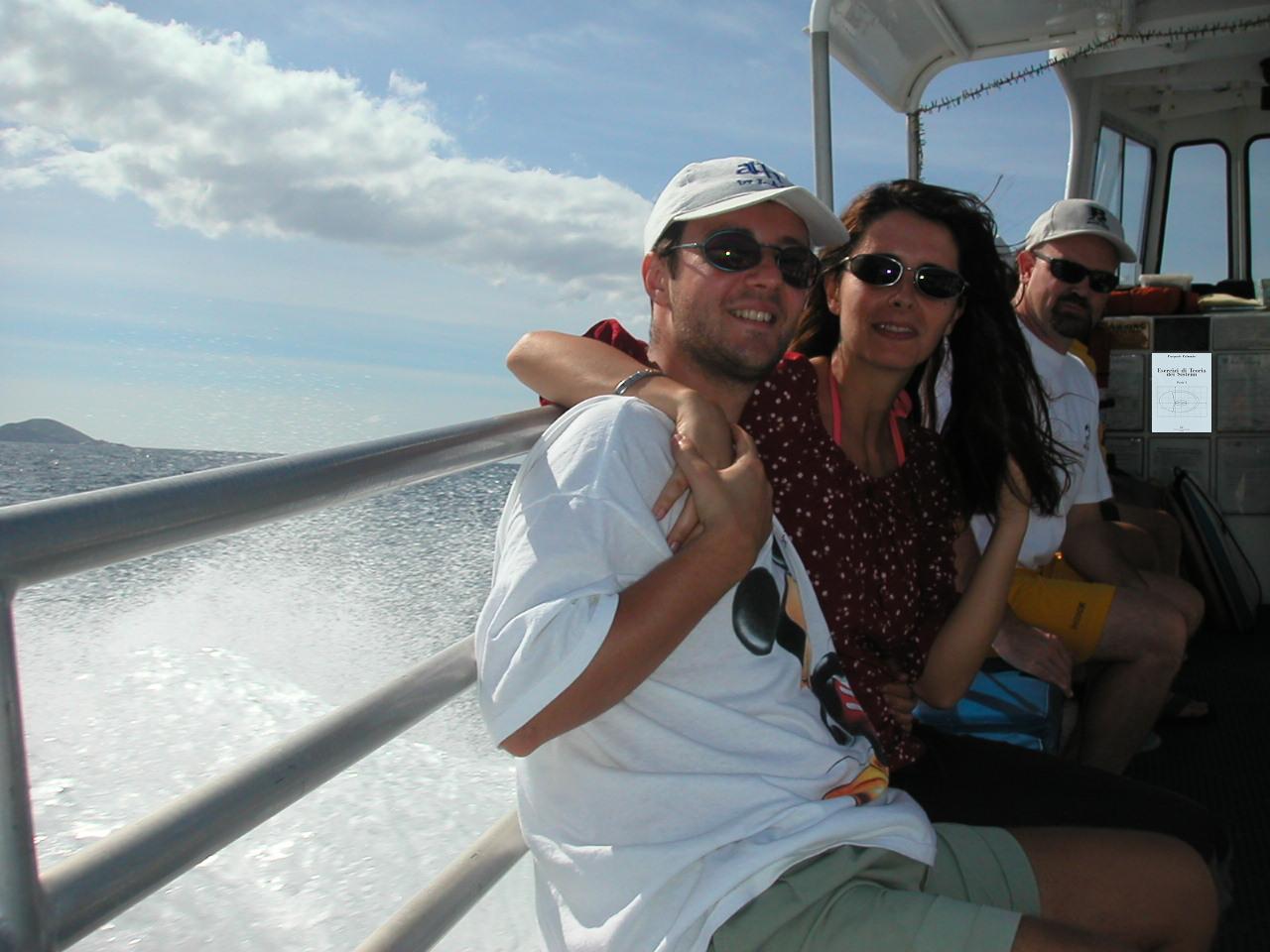
 last changes: 19/11/18
last changes: 19/11/18
